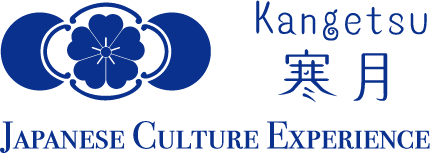About Japanese Calligraphy Japanese Calligraphy Experience in Kyoto
Introduction to Japanese Calligraphy
Japanese Calligraphy is a traditional Japanese art form that pursues the artistic expression of writing characters.
Japanese calligraphy developed from Chinese characters and techniques introduced from ancient China, evolving unique styles over time.
Initially, writing was valued as a means of recording and communication, but over time it evolved into an artistic form, establishing the art of calligraphy as we know it today.
The introduction of calligraphy to Japan dates back to the Asuka period in the 6th century.
During this time, as Buddhism was transmitted from China, Chinese characters were used to transcribe scriptures and doctrines, making writing techniques essential.
Understanding of Chinese characters deepened, embedding calligraphic techniques and aesthetics in Japan.

1. Nara Period (8th Century)
The history of calligraphy in Japan is said to have begun in earnest during the Nara period.
During this time, the use of Chinese characters became widespread in Japan, playing a key role in Buddhist scriptures and rituals.
Japanese Calligraphy was utilized in historical texts such as *Nihon Shoki* and *Kojiki*, as well as in administrative and official records.
Chinese calligraphic styles such as clerical and seal script were introduced, greatly influencing Japanese calligraphy.

2. Heian Period (9th–12th Century)
During the Heian period, alongside Chinese characters, Japan developed its own kana script (hiragana and katakana), adding a new dimension to calligraphy.
Kana calligraphy flourished, particularly in women's literature, where beautiful kana writing became highly valued.
Works by writers such as Murasaki Shikibu and Sei Shonagon are exemplary of kana calligraphy as an art form.
The focus shifted to the beauty of characters, reflecting the writer's spirituality and individuality.

3. Kamakura Period (12th–14th Century)
The Kamakura period saw the influence of Zen Buddhism on calligraphy.
Zen monks incorporated calligraphy as part of their spiritual training, emphasizing the flow and spirit of brushstrokes over the form of characters.
Japanese styles such as *wayō* emerged, further evolving the unique characteristics of Japanese calligraphy.

Commonalities Between Japanese Calligraphy and Zen Commonalities Between Japanese Calligraphy and Zen
The State of No-Mind
Japanese Calligraphy and Zen are iconic traditions deeply connected in Japanese culture. Zen philosophy greatly influences calligraphy techniques and expressions, with both emphasizing the pursuit of spirituality.
- The State of No-Mind
- In Zen practice, "no-mind" refers to clearing the mind of distractions. In calligraphy, this state enables natural, powerful strokes.
- Self-Exploration
- Zen involves exploring one's essence. Similarly, calligraphy serves as a form of self-expression, offering a chance to reflect and express inner thoughts through brushwork.
- Simplicity and Naturalness
- Zen aesthetics value simplicity and natural beauty. In calligraphy, unadorned and meaningful works are highly appreciated.
- Brush Zen Way
- *Hitsuzen-dō* (Brush Zen Way) combines calligraphy and Zen practice, aiming for self-exploration and spiritual growth through the brush.
- Historical Background
- The relationship between Zen and calligraphy dates back centuries, with Zen monks' calligraphy (*bokuseki*) embodying Zen philosophy.







